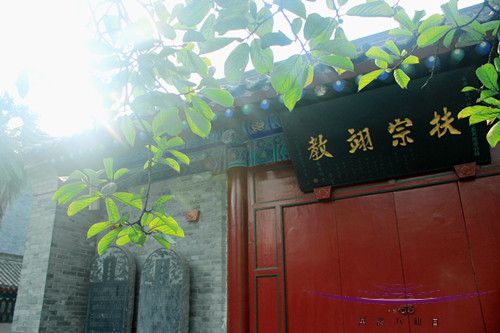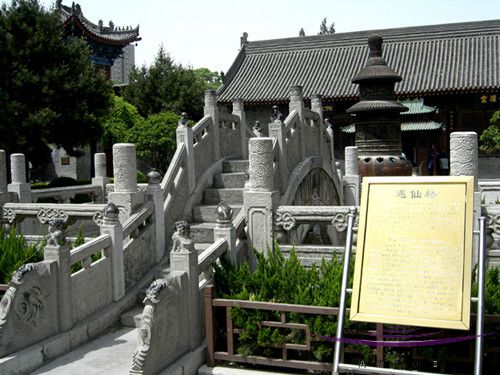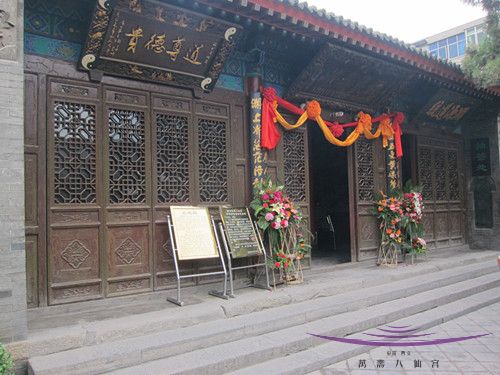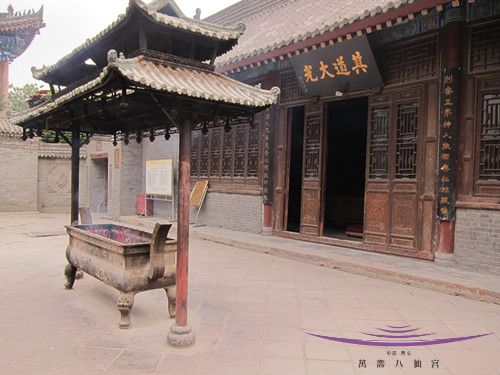Chijian Wanshou Baxian Gong 八仙宫
 13
13
 2020-11-04 17:13:55
2020-11-04 17:13:55
Company address
Location:
China, Shaanxi , 12 Beihuoxiang, Jiao Da Shang Ye Jie Qu, Beilin, Xi'an, Shaanxi, China
Service types
About company
Xi’an Baxian Palace , also known as Baxian Temple, is the largest and most famous Taoist Temple in Xi’an. It is located in Changlefang, Dongguan, Xi’an. It was built in Song Dynasty and is part of the former site of Xingqing Palace in Tang Dynasty. The Eight Immortals Palace is well-known at home and abroad for its beautiful and moving legends of "Eight Immortals". It is regarded as a Taoist fairy relic site. The Eight Immortals are the eight gods in Taoist legends, namely Tieguai Li, Han Zhongli, Zhang Guolao, He Xiangu, Lan and mining, Lu Tung-pin , Han Xiang, obviously drunk. According to the records of the stele of the Eight Immortals Palace, in the Song Dynasty, the underground often heard the faint sound of thunder, and the people built the thunder temple. Later, someone saw the eight different people banqueting here in the Thunder Temple, and believed that the "eight immortals" manifested. Then built the Temple of Eight Immortals to worship it, called the Temple of Eight Immortals. In front of the nunnery, there is a stone stele of "Chang'an Jiuchang" with the engraved "Mr. Lu Chunyang encountering Han Zhongli's Dao Dao." According to the "Legend of Immortals", Zhong Liquan's ancestor felt Lu Dongbin at Chang'an Jiuchang , and "Huangliang Mengjue" helped him become immortal. Later generations set up a temple here to commemorate Lu Zu.
During the Jin and Yuan Dynasties, Taoist Quanzhen Sect was prospered. Quanzhen Sect respected Han Zhongli and Lu Dongbin as the five ancestors of the North. Therefore, it built large-scale construction projects and expanded temple halls on the basis of "Leizu Hall" and "Eight Immortals Temple". At this time, the Baxian Temple building has already taken shape. From the Ming and Qing Dynasties to the Ming and Qing dynasties, Taoist temples have been formed in ten jungles, which are the main places for Taoists in the northwestern provinces to teach and learn Taoist knowledge.In the twenty-sixth year of Guangxu in the Qing Dynasty (1900), the Eight-Power Allied Forces entered Beijing, and the Empress Dowager Cixi and Emperor Guangxu fled west to take refuge in Xi'an and stationed in Baxian Temple. Later, 1,000 taels of silver were awarded, and Li Zongyang, the chief of the Eight Immortals Palace, was ordered to build a memorial arch, and awarded the "Yuqing Zhidao" plaque to the Eight Immortals Temple, and gave the name "Eight Immortals Palace for Longevity". Hanging on the front door collar of the nunnery. After the founding of New China, the local government allocated funds for renovation several times. From then on, Baxian Temple was also called Baxian Palace.
The existing palace buildings of the Eight Immortals Palace retain the features of the Ming and Qing dynasties, with simple style, compact layout, solemn and majestic, elegant and clean courtyard, beautiful environment, exotic flowers and plants, and towering old trees. There are three entrances from the mountain gate to the apse, the second floor of the bell and the drum are arranged on the left and right, and there are two courtyards from east to west. Among the axes are the Lingguan Hall, the Eight Immortals Hall, and the Dou Lao Hall; the East Kuayuan has Lu Zu Hall, the Yaowang Palace, and the Taibai Hall respectively; the West Kuayuan has Qiu Zu Hall and the house of the abbot in the palace. In the west cross courtyard, there is also a beautiful west garden. It covers an area of nearly 100 acres. The entire building is scattered and spectacular.
In the early days of liberation, the Eight Immortals Palace had 108 Taoists and 126 acres of land. A high-level agricultural cooperative was established in 1956 and renamed as a People’s Commune in 1958. During the Cultural Revolution, the Eight Immortals Palace was severely damaged and houses and halls were occupied by factories. The Eight Immortals Palace was approved by the State Council as a national key open palace and was listed as a key cultural relics protection unit in Shaanxi Province. The "Eight Immortals Palace Management Leading Group" was established. In 1985, the factory was moved out of occupied houses and halls. In 1991 Master Min Zhiting was elected as the Supervisory House and Master Zeng Jiaofeng as the Deputy Supervisory House. In 1996, the "Eight Immortals Palace Management Committee" was established. Today, the courtyard here is elegant and clean, the environment is quiet, exotic flowers and grasses, and ancient trees towering above the sky. It is just like Qionglin Langyuan, which gives people a fresh feeling.
The Eight Immortals Palace is the most complete Taoist temple in Xi'an. Since its founding in the Song Dynasty, it has undergone rebuilding and expansion, the layout has become more complete and the buildings have become more and more spectacular. Today's Eight Immortals Palace integrates religion, culture and tourism, and welcomes visitors from all directions with its elegant environment and colorful cultural life. It has become a holy place for Taoists across the country and one of the key Taoist temples in the country. It is the first batch of cultural relics protection units in Shaanxi Province.





































 Post ad
Post ad 














